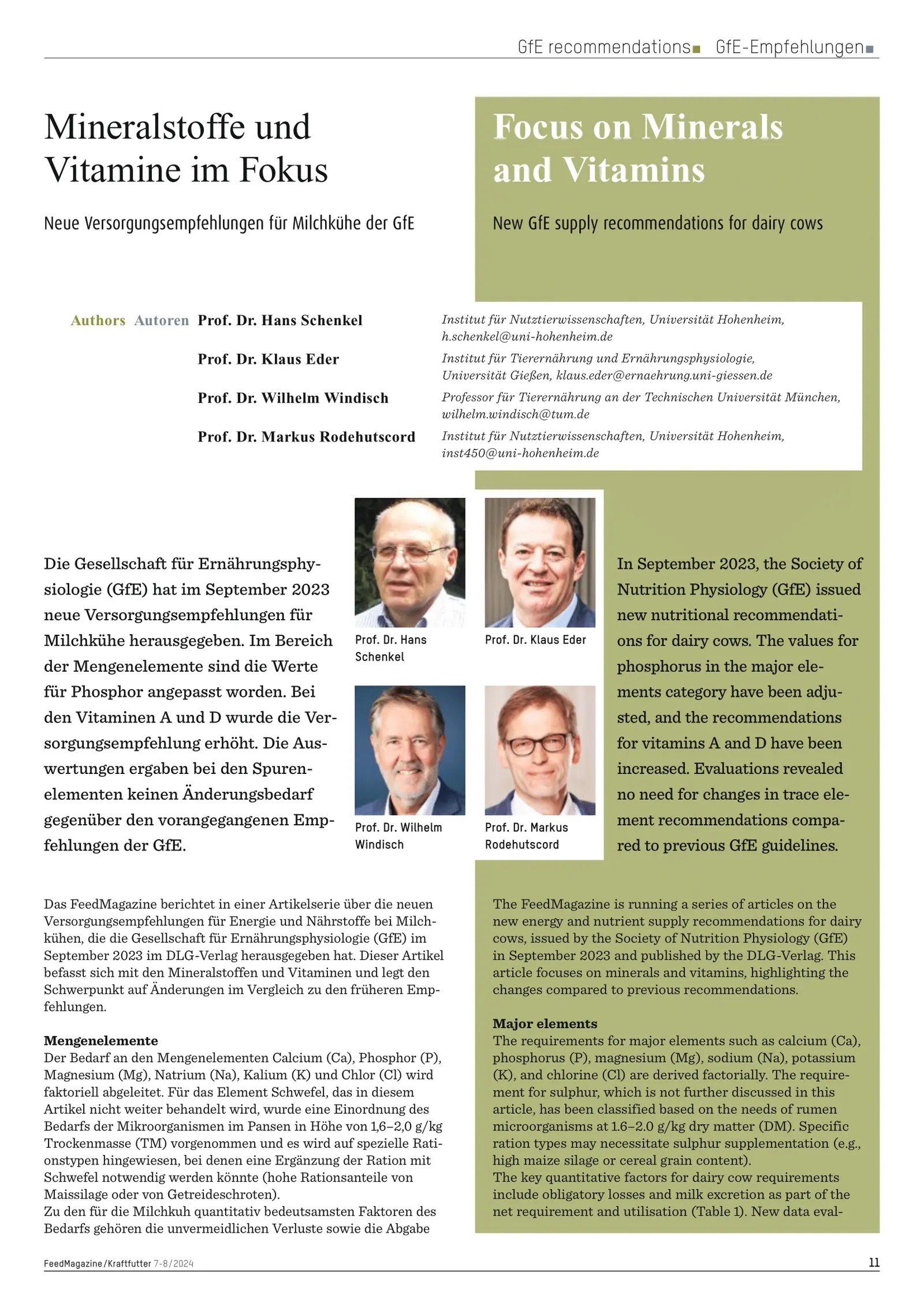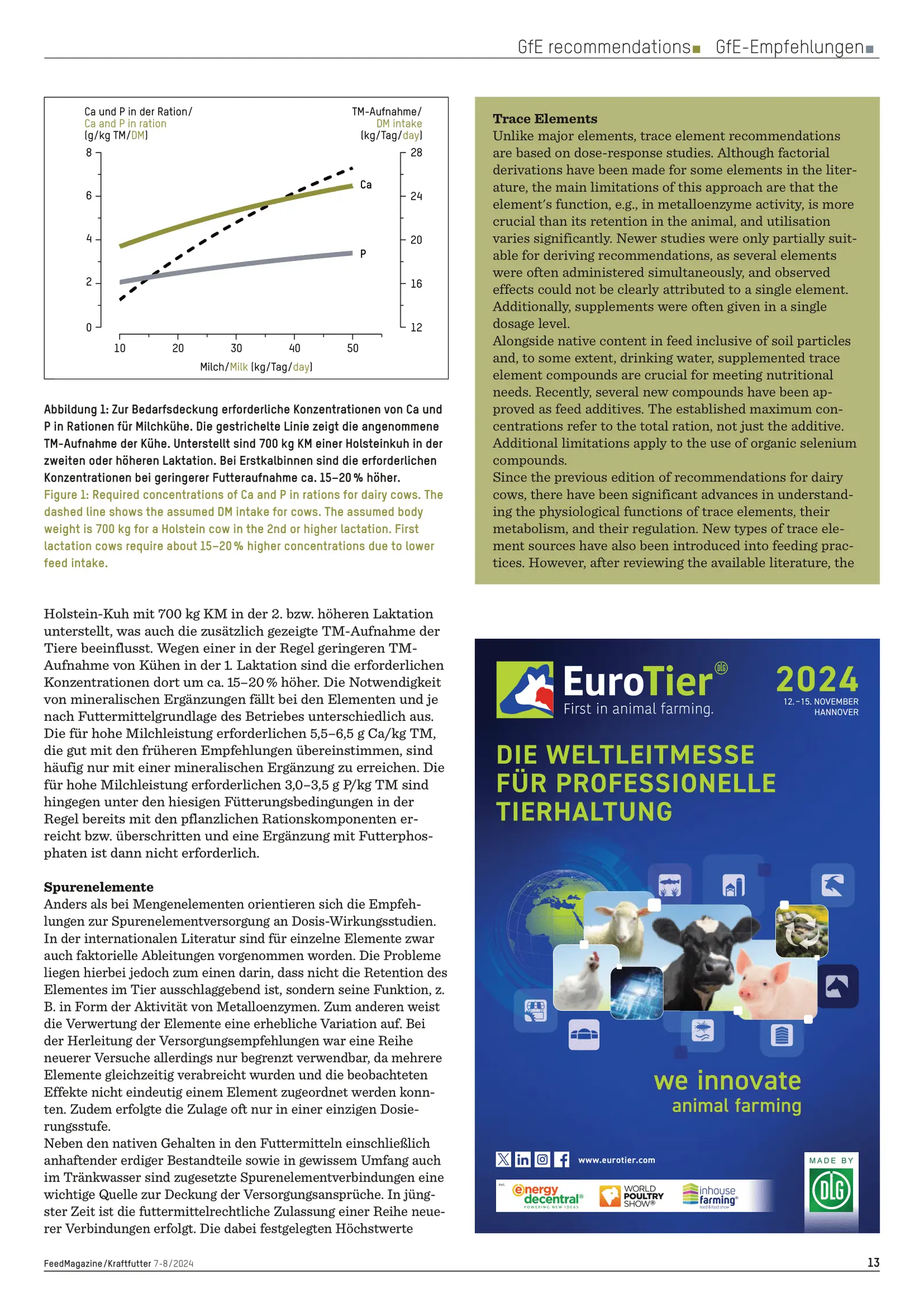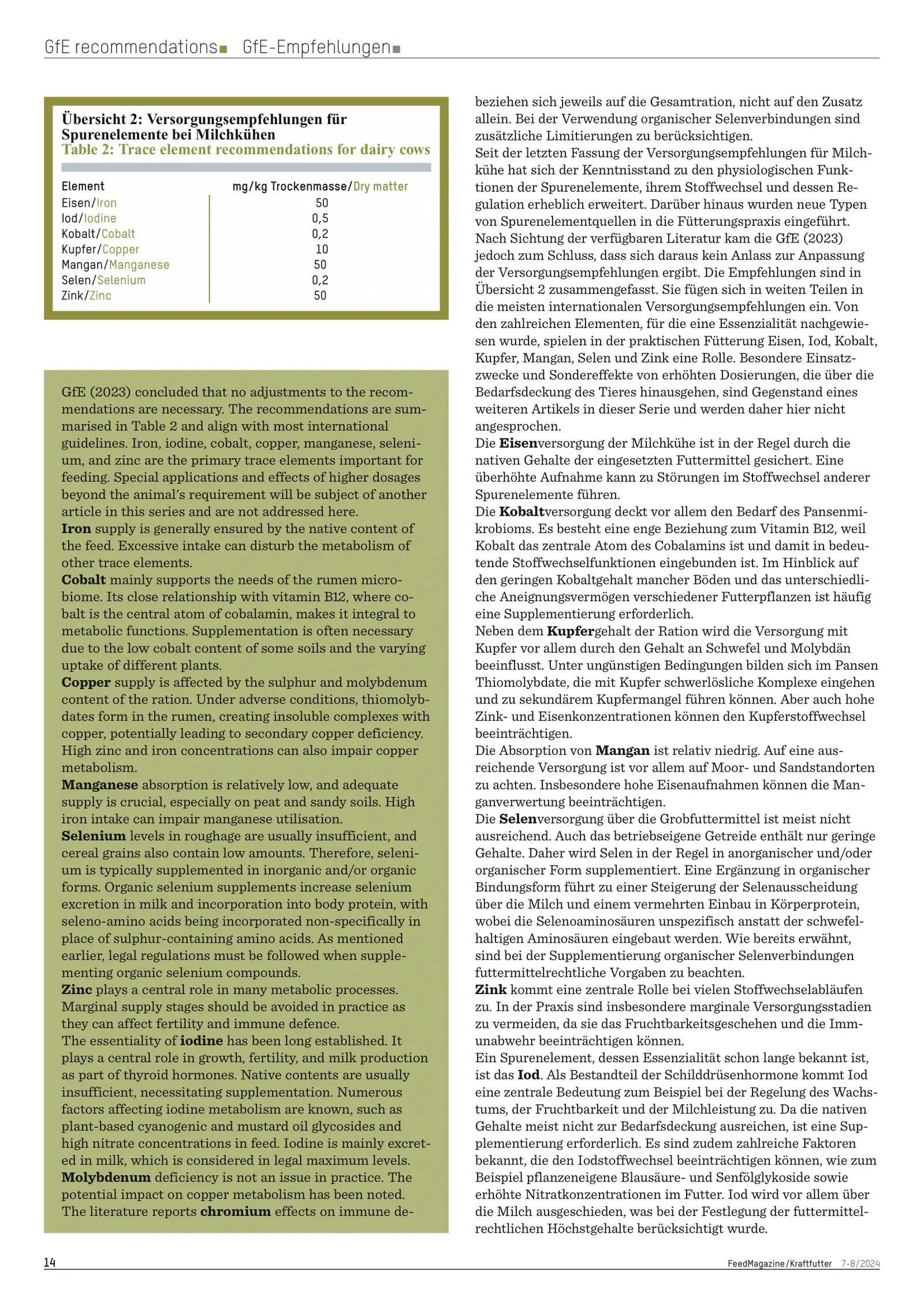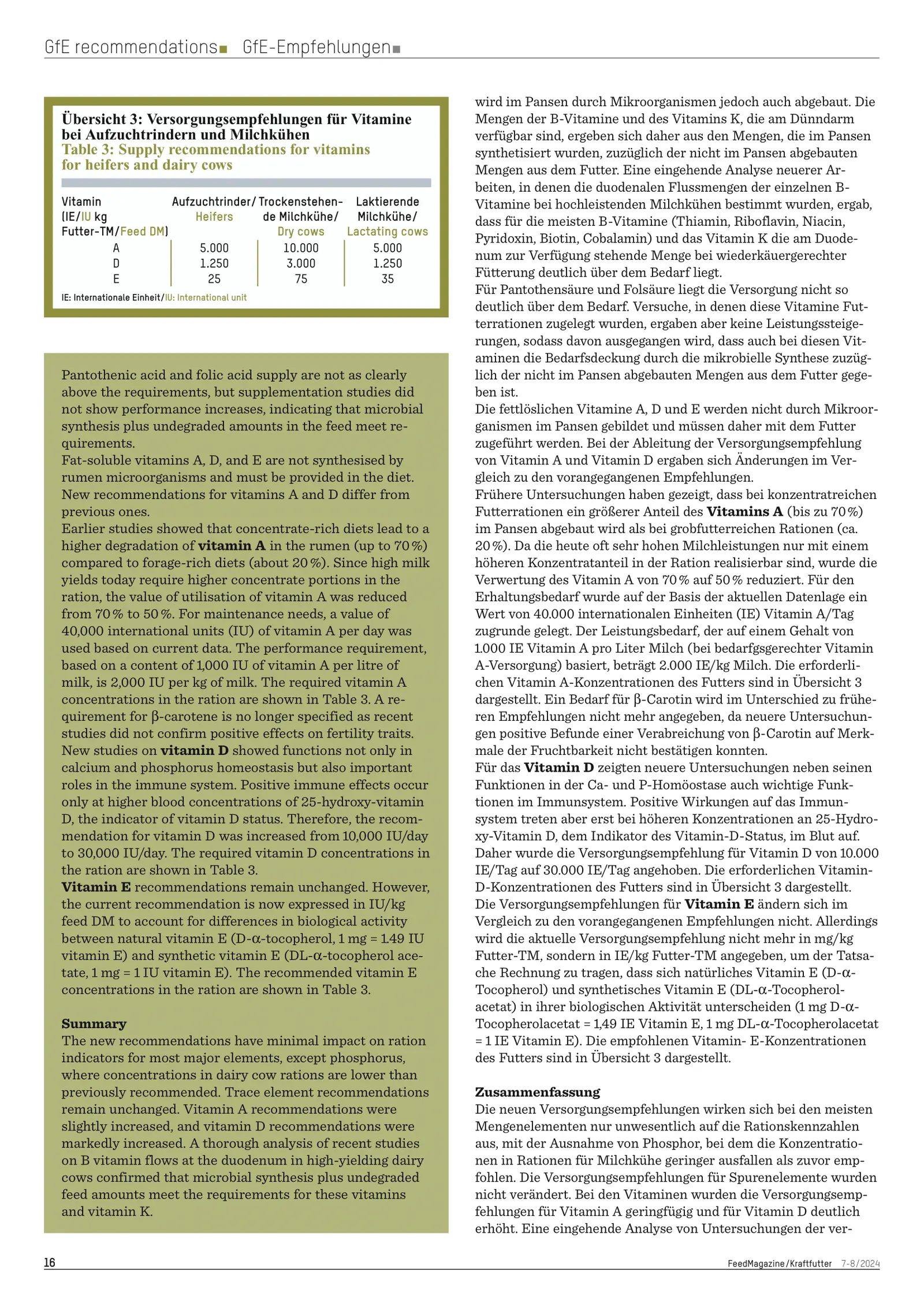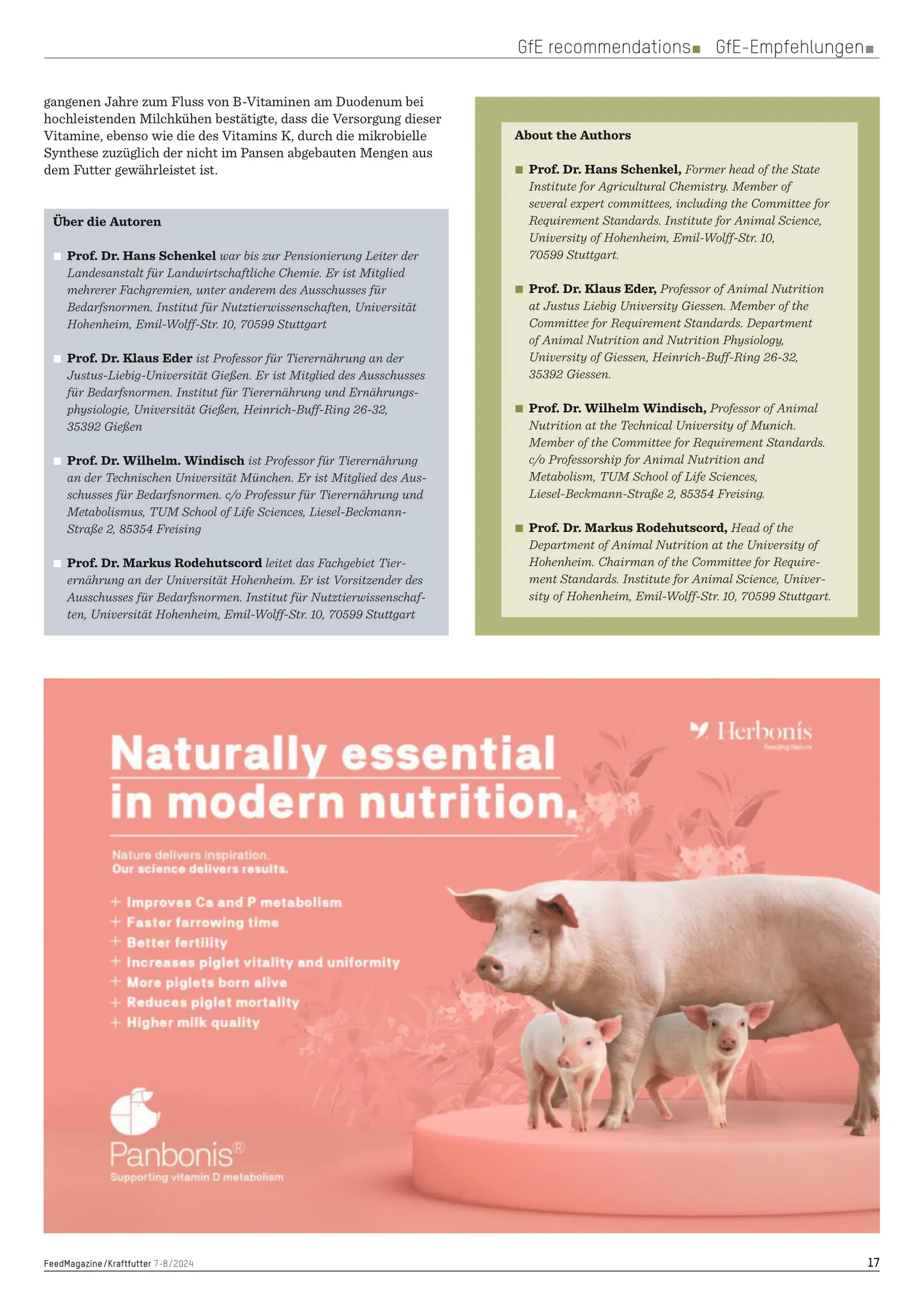Source: FeedMagazine/Kraftfutter 7-8/2024
Authors: Prof. Dr. Hans Schenkel, Prof. Dr. Klaus Eder, Prof. Dr. Wilhelm Windisch, Prof. Dr. Markus Rodehutscord
The Society of Nutrition Physiology (GfE) published updated recommendations for energy and nutrient supply for dairy cows in September 2023. This article focuses on the revised requirements for minerals and vitamins.
Major Elements
The requirements for calcium (Ca), phosphorus (P), magnesium (Mg), sodium (Na), potassium (K), and chlorine (Cl) are derived factorially.
New data have confirmed a phosphorus utilisation increase from 70% to 80% in dairy cows.
Calcium and phosphorus concentrations are now differentiated by breed.
Magnesium (Mg) utilisation varies depending on potassium (K) levels in the diet. As K concentration increases, Mg absorption declines, which can impact susceptibility to milk fever.
Trace Elements
Unlike major elements, trace element recommendations are based on dose-response studies.
The updated guidelines do not change previous recommendations, as recent research did not indicate a need for revision.
Essential trace elements in dairy cow nutrition include iron (Fe), iodine (I), cobalt (Co), copper (Cu), manganese (Mn), selenium (Se), and zinc (Zn).
Selenium is typically supplemented because natural feed sources contain low amounts.
Copper metabolism is influenced by molybdenum and sulfur, which can form thiomolybdates in the rumen, leading to secondary copper deficiency.
Vitamins
Water-soluble vitamins (B-complex, vitamin K) are largely produced by rumen microbes, making dietary supplementation generally unnecessary.
Vitamin A recommendations were adjusted due to higher degradation rates in concentrate-rich diets. The new utilisation value was reduced from 70% to 50%, increasing the recommended dietary intake.
Vitamin D recommendations increased significantly from 10,000 IU/day to 30,000 IU/day, considering its role in immune function.
Vitamin E recommendations remain unchanged but are now expressed in international units (IU) instead of mg to account for differences between natural and synthetic vitamin E sources.
Conclusion
The revised GfE recommendations mainly impact phosphorus (lower concentration in rations) and vitamins A and D (higher supplementation levels). These updates ensure more precise nutrient supply planning for dairy cows, aiming to optimize performance, health, and environmental sustainability.
The New Regulations for Dairy Cow Feeding in HYBRIMIN Futter X
The latest GfE recommendations are integrated into HYBRIMIN Futter X. Contact our support team for more information.
 Croatian
Croatian Danish
Danish French
French German
German Greek
Greek Polish
Polish Portuguese
Portuguese Romanian
Romanian Russian
Russian Spanish
Spanish Turkish
Turkish